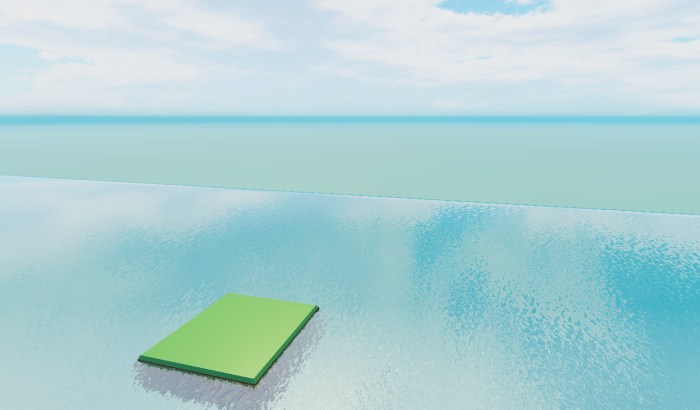Is the ocean infinite? The question has captivated scientists, explorers, and dreamers for centuries. With its seemingly boundless depths and endless horizons, the ocean has inspired awe and wonder, beckoning us to explore its mysteries. Join us as we delve into the vastness of our seas, uncovering the secrets of its size, diversity, and the profound impact it has on our planet.
From the sun-drenched surface to the unexplored abyss, the ocean is a realm of astonishing proportions. Its vastness is shaped by a myriad of factors, including its depth, surface area, and volume. As we explore these dimensions, we’ll discover the challenges and triumphs of ocean exploration, marveling at the discoveries that have expanded our understanding of this enigmatic realm.
Ocean’s Vastness and Boundaries

The ocean, covering over 70% of Earth’s surface, is a colossal expanse of water that connects all continents and shapes our planet’s geography. Its vastness extends from the sunlit surface to the depths of the abyss, encompassing an array of ecosystems and supporting an incredible diversity of life.
The ocean’s surface area, approximately 361 million square kilometers, dwarfs the landmass of Earth. Its average depth of 3,700 meters, with some areas reaching over 11,000 meters, creates an immense volume of water, estimated at around 1.33 billion cubic kilometers.
The ocean’s “edges” are not as clearly defined as those of landmasses. The boundary between ocean and land is often gradual, with intertidal zones and coastal ecosystems transitioning from marine to terrestrial environments. The ocean’s outer limits are more ambiguous, with some scientists defining it as the point where the continental crust meets the oceanic crust.
Exploration and Discovery: Is The Ocean Infinite

Human exploration of the ocean has a long and fascinating history. From ancient mariners venturing into unknown waters to modern-day scientists using advanced technologies, the pursuit of understanding the ocean’s depths has driven countless expeditions.
Despite significant advancements in technology, exploring the ocean remains a challenging endeavor. Technological constraints, such as extreme pressure and darkness at great depths, limit our ability to directly observe and study these environments. Environmental factors, including strong currents and unpredictable weather conditions, also pose significant challenges to ocean exploration.
Nevertheless, groundbreaking discoveries continue to be made. In the 1970s, hydrothermal vents were discovered on the ocean floor, revealing thriving ecosystems in the absence of sunlight. Advanced submersibles, like the Deepsea Challenger, have enabled scientists to reach the deepest parts of the ocean, uncovering new species and expanding our knowledge of the planet’s geology.
Marine Ecosystems and Biodiversity

The ocean encompasses a vast array of ecosystems, each with its unique characteristics and inhabitants. From the sunlit surface waters to the dark depths of the abyss, marine ecosystems support an astonishing diversity of life.
Coastal ecosystems, including estuaries, mangrove forests, and coral reefs, are highly productive areas that serve as breeding grounds and nurseries for many marine species. The open ocean, covering the majority of the planet’s surface, is home to a vast array of pelagic organisms, including fish, seabirds, and marine mammals.
The deep sea, once considered a barren wasteland, has been revealed to be teeming with life. Hydrothermal vents, cold seeps, and other chemosynthetic ecosystems support specialized organisms that thrive in extreme conditions. These ecosystems play a crucial role in nutrient cycling and contribute to the overall biodiversity of the ocean.
Ocean’s Role in Earth’s Systems

The ocean is an integral part of Earth’s interconnected systems, influencing climate, weather patterns, and the global distribution of water.
The ocean plays a significant role in regulating Earth’s climate. Its vast surface area absorbs and releases heat, moderating global temperatures. Ocean currents transport heat and nutrients around the globe, influencing regional climates and weather patterns.
The ocean is also a major player in the carbon cycle. It absorbs carbon dioxide from the atmosphere, helping to regulate atmospheric CO2 levels and mitigate climate change. Additionally, the ocean’s role in the water cycle ensures the distribution of freshwater resources, shaping the availability of water for human populations and ecosystems.
Human Impact and Conservation
Human activities have a profound impact on the ocean, both positive and negative. Overfishing, pollution, and climate change threaten marine ecosystems and their inhabitants.
Recognizing the importance of ocean conservation, efforts are underway to protect marine environments and ensure the sustainability of marine resources. Marine protected areas, fisheries management, and international agreements aim to mitigate human impacts and preserve the health of the ocean.
Examples of successful conservation initiatives include the establishment of marine reserves, the regulation of fishing practices, and the reduction of plastic pollution. These efforts demonstrate the importance of human stewardship in protecting the ocean and its vital role in sustaining life on Earth.
Question & Answer Hub
How deep is the ocean?
The average depth of the ocean is about 3,700 meters (12,100 feet), but the deepest point is the Mariana Trench in the Pacific Ocean, which reaches a depth of 11,034 meters (36,201 feet).
What percentage of the Earth’s surface is covered by water?
About 71% of the Earth’s surface is covered by water, and the oceans hold about 96.5% of the Earth’s water.
Are there any parts of the ocean that have never been explored?
Yes, there are still many unexplored areas in the ocean, especially in the deep sea. It is estimated that only about 5% of the ocean has been explored.
